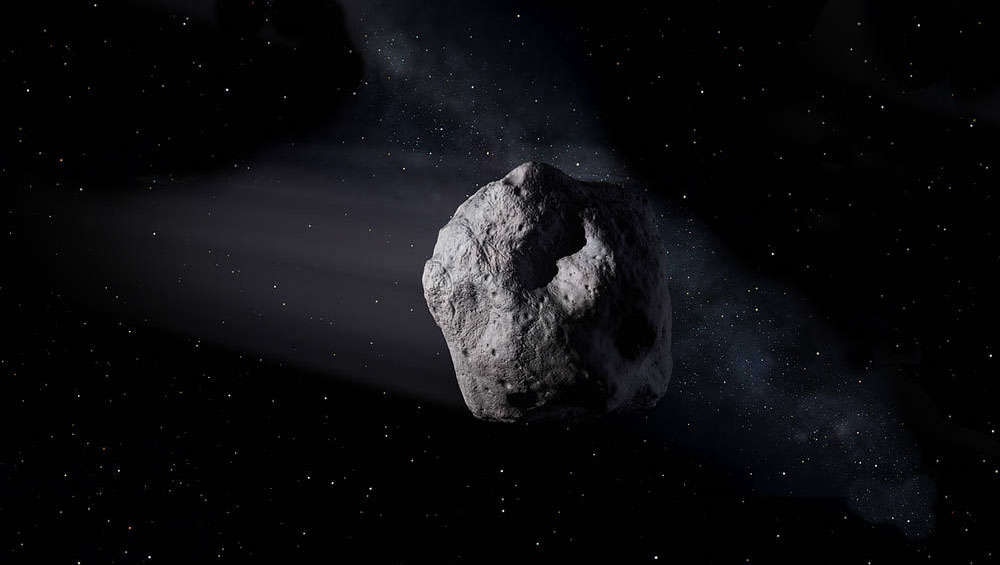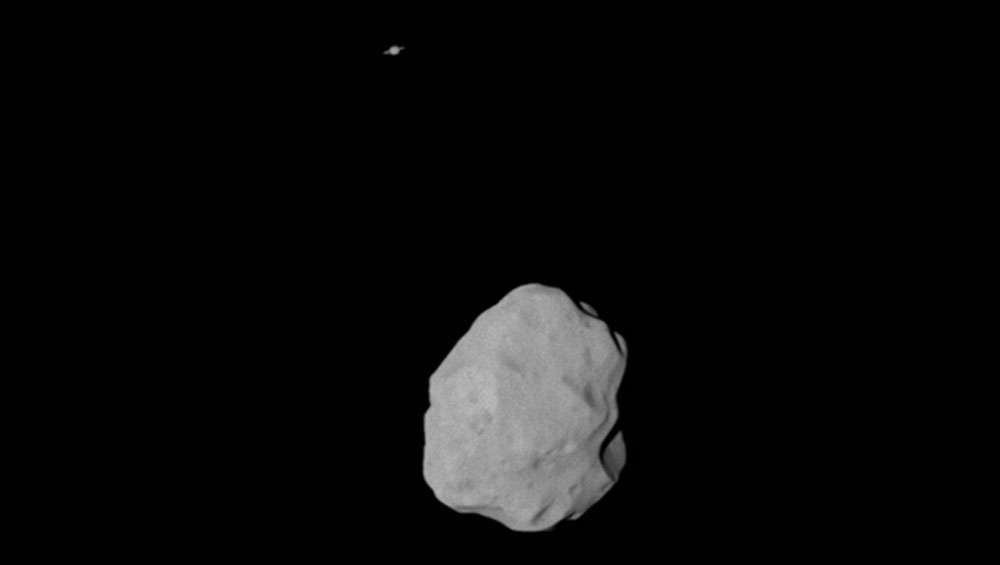Create a free profile to get unlimited access to exclusive videos, sweepstakes, and more!
Don’t freak out—but a monster asteroid is going to be whizzing way too close to Earth soon

2020 was basically a disaster movie and 2021 isn’t looking much better. As if that wasn’t dystopian enough, there is now a ginormous asteroid that will be passing uncomfortably close, uncomfortably soon.
Asteroid 2001 FO32 is going to be zooming past Earth on March 21—but wait. There is no reason to start doomsday prepping yet, even though it is large enough and will be close enough to be classified as a Potentially Hazardous Asteroid (PHA) by NASA. 2001 FO32 does sound like nightmare fuel at first. The space rock, whose orbit intersects with Earth’s, will be both the biggest and fastest asteroid to pass our home turf in 2021. This thing is about as wide as the length of the Golden Gate Bridge and will be making a flyby at almost 770,000 mph. That’s 21 miles a second.
Wait a moment before you stockpile toothpaste and dish soap in your basement. NASA is positive 2001 FO32 won’t hit us despite the scary classification it gave the asteroid.
"Asteroid 2001 FO32 is not a danger to us," Paul Chodas, NASA Director for Near Earth Object Studies, told SYFY WIRE. "Categorizing an asteroid as a PHA does not necessarily mean that it is predicted to collide with Earth imminently, or even within the next couple centuries. It just means that over a timespan of thousands or tens of thousands of years, the asteroid could conceivably impact Earth."
They know something over there, because they have been monitoring the object since 2001 (it can take years and even decades to confirm where something is and where it’s going in outer space). The qualifications for a Potentially Hazardous Asteroid make 2001 FO32 sound much more unnerving than it actually is. But first, before something is officially seen as hazardous, it needs to qualify as a Near-Earth Object (NEO).
Asteroids and comets often end up as NEOs when gravity from other planets pushes them close to Earth. Most will never be another dinosaur wipeout waiting to happen. Astronomers with their eye on an object will look at its orbit's perihelion distance, or the distance at which it gets closest to the sun. If that object's orbit takes it into the inner solar system, and its perihelion distance is no more than 1.3 astronomical units (au) or almost 121 million miles away from the Sun, it gets NEO status.
Asteroids and other NEOs must be around 500 feet long and sneak within 4.6 million miles of Earth as they orbit to be Potentially Hazardous Asteroids or, if the threat in question is a comet, Potentially Hazardous Objects. We have one thing the dinosaurs didn’t before the Chixculub asteroid smashed into Earth. NASA and other space agencies are developing asteroid deflection techniques. Most of the 2170 asteroids with this classification are not so scary. Because you can never be too prepared, finding out exactly how huge a hazardous NEO is, along with its shape, mass, structure and chemical composition, helps scientists to figure out the best way to deflect it. 2001 FO32 won't get any closer to Earth than 1.25 million miles.
But why the need for so much speed? The rock's orbit whips it around our planet.
"The asteroid will be zipping by at a higher-than-typical speed, mostly because its is highly inclined to Earth’s orbit (39 degrees), which means it’s moving in a significantly different direction than the Earth when the two approach each other," Chodas said. "It is also on a very eccentric orbit, which makes it cross Earth’s orbit at a large angle. Most other asteroids move on less inclined and less eccentric orbits, which means they cross Earth’s orbit at a much smaller angle."
If you have a telescope, dust it off. It wil get brighter and more visible to telescopes on Earth the closer it gets. Astronomers will then have the chance to observe it in the optical and infrared wavelengths, which will give them an idea what its shape and surface look like.
NASA’s DART mission, which launches this July, will experiment on harmless asteroid Didymus which is 11 million miles away. There will be one spacecraft that crashes into Didymus and moves it out of the way, shifting the orbit of its moonlet “Didymoon”, and another to image the entire thing as it goes on.
2001 FO32’s orbit has been studied long enough for NASA to be sure it won’t end up giving our planet a punch in the face. It is in a highly elliptical orbit around the Sun and passes our star every 810 days, so a year on this asteroid is a little over twice what it is over here. Its size was determined by how bright it appears, which depends on the way it reflects light. It may be larger than 97% of asteroids, but remember that many asteroids and meteorites are small enough to burn up or at least break up in the atmosphere if they do come hurtling down to Earth.
Chodas is actually looking forward to observing 2001 FO32 instead of expecting the apocalypse.
"We expect this will be the closest any multi-hundred-meter asteroid will approach in the year 2021," he said. "So it is noteworthy. This asteroid is also larger than Bennu and roughly the same size as Ryugu. Our colleagues could also use the orbit of this asteroid as an example of a difficult asteroid to deflect."
Even at a size that would make the Golden Gate Bridge shudder, it is still nothing compared to the really large asteroids lurking in the dark. We won’t even have to worry about any of those for at least the next hundred years.



























